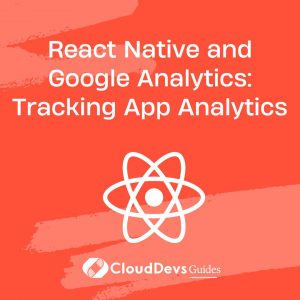React Native and Google Analytics: Tracking App Analytics
In the ever-evolving landscape of mobile app development, React Native has emerged as a powerful framework for building cross-platform applications. Its ability to write code once and deploy it across multiple platforms like iOS and Android makes it a favorite among developers. However, one aspect that remains crucial for any app, regardless of the framework used, is tracking and analyzing user behavior and app performance. This is where integrating Google Analytics into your React Native app becomes invaluable.
Why Track App Analytics?
Understanding how users interact with your app is essential for making informed decisions about its design, features, and overall performance. App analytics provide insights into user engagement, retention rates, popular features, and potential pain points. By tracking these metrics, developers and product managers can optimize the app to enhance user experience and drive business growth.
Integrating Google Analytics with React Native
Integrating Google Analytics with a React Native app is a relatively straightforward process, thanks to community-driven packages and libraries. One popular choice is the react-native-google-analytics-bridge package, which offers seamless integration with Google Analytics.
Step 1: Set Up Google Analytics Account
First, create a Google Analytics account if you haven’t already. Once logged in, set up a new property specifically for your mobile app. Google Analytics will provide you with a tracking ID, which you’ll need to configure within your React Native app.
Step 2: Install Dependencies
In your React Native project directory, install the react-native-google-analytics-bridge package using npm or yarn:
npm install react-native-google-analytics-bridge --save
or
yarn add react-native-google-analytics-bridge
Step 3: Configure Google Analytics
Next, configure Google Analytics in your React Native app. Import the necessary modules and initialize Google Analytics with your tracking ID. This typically occurs in your app’s entry point, such as App.js:
import { GoogleAnalyticsTracker } from 'react-native-google-analytics-bridge';
const tracker = new GoogleAnalyticsTracker('YOUR_TRACKING_ID');
tracker.setAppName('Your App Name');
tracker.setAppVersion('1.0.0');
tracker.setDispatchInterval(30); // Optional: Set dispatch interval in seconds
tracker.setDryRun(false); // Optional: Enable dry run mode
Step 4: Track Events and Screens
Once configured, you can start tracking events and screens within your app. For example, to track a screen view:
tracker.trackScreenView('Home Screen');
And to track an event:
tracker.trackEvent('Button', 'Click', { label: 'Login' });
Real-World Examples
- E-commerce App: Imagine you’re developing an e-commerce app with React Native. By integrating Google Analytics, you can track user interactions such as product views, add to cart actions, and purchases. This data helps you understand user behavior, popular products, and conversion rates.
- Fitness Tracking App: In a fitness tracking app, you can use Google Analytics to track user workouts, calories burned, and achievement milestones. Insights from app analytics can guide feature updates, personalized recommendations, and user engagement strategies.
- Social Media App: For a social media app built with React Native, tracking features like post views, likes, comments, and shares provides valuable insights into user engagement and content popularity. Analytics data informs content algorithms, user interface improvements, and monetization strategies.
Conclusion
Integrating Google Analytics into your React Native app empowers you to track and analyze user behavior effectively. By gaining insights into how users interact with your app, you can make data-driven decisions to optimize performance, enhance user experience, and drive business growth.
Start tracking your React Native app analytics today and unlock valuable insights to propel your app to success.
External Resources
- React Native Google Analytics Bridge GitHub Repository
- Google Analytics Documentation
- Getting Started with React Native
By integrating Google Analytics with React Native, you can leverage the power of data to optimize user experience and drive growth. Whether you’re building an e-commerce app, fitness tracker, or social media platform, tracking app analytics is essential for making informed decisions and achieving success.
Table of Contents









